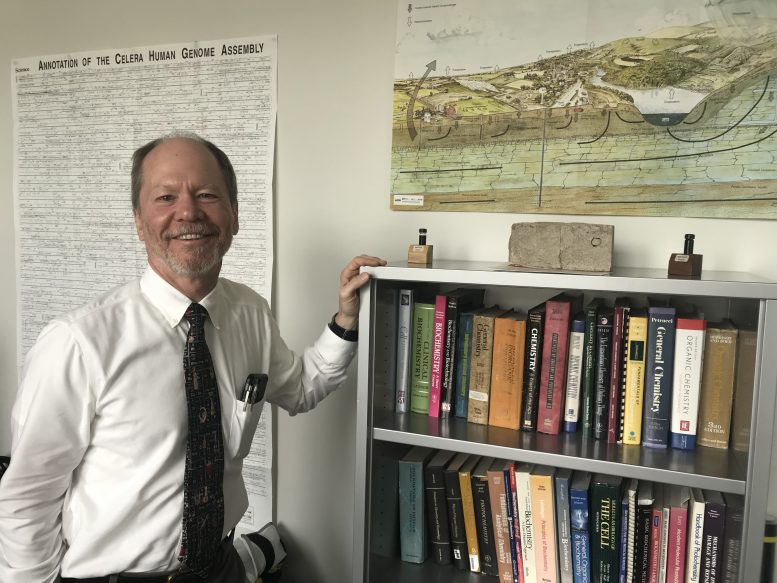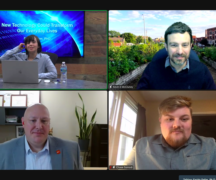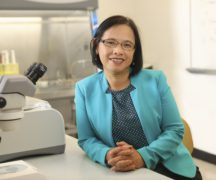By DAVID DUPONT
BG Independent News
When Bob Midden talked about his plans for retirement he emphasized that once he’d shed his administrative duties he was going to focus on what he most wanted to do, what he found most interesting, significant and fun.
So Midden will be knee deep in manure. Not that he’s planning to go into farming. Instead he will be continuing his grant-funded work with other researchers into how to deal with the waste that generated at concentrated animal feeding operations — CAFOs, sometimes called “factory farms,” a term Midden said is inaccurate.
Those agricultural operations that raise beef and hogs for meat and maintain dairy herds use a lot of water to move the manure, Midden said in an interview about his retirement after 32 years at Bowling Green State University.
“If you’re going to raise animals as a source of food, it’s better environmentally if you use that manure as an agricultural fertilizer,” he said.
That’s not as easy as it sounds.
“You end up with material that’s 95-98 percent water. It contains useful valuable agricultural nutrients phosphorus and nitrogen, which are two of the elements that tend to be insufficiently available in agricultural soil,” he explained.
But it’s too heavy to transport more than a few miles.
“If you apply more of that material to soil than can be absorbed in a single growing season that excess is available to be washed into the watershed by precipitation,” Midden said. “When those nutrients get into the watershed they can promote the growth of other photosynthetic organisms.”
What feeds corn, soybeans, and wheat on land, provides the nutrients needed for harmful algal blooms.
So Midden and others are looking at ways to separate those nutrients and the water. That makes the manure 20-30 lighter and makes it easier to transport, so it can be spread more evenly on fields.
This is done using polymers that the nutrients bind to, he said. Those polymers have another advantage. They break down slowly in the soil.
Instead of nutrients being applied right before, or right after planting, when they are not needed as much and are susceptible to running off with a heavy rain, they stay in the soil feeding the plants throughout the season.
“If the timing is right the crops will absorb it before the rain can wash it away so it reduces further the amount of the nutrient that will migrate into the waterways,” he said.
“An important goal of our research is to develop this process so it’s simple and inexpensive,” Midden said. “If production cost is low enough, you could in principle make money.”
That would provide a financial incentive to address a pressing environmental problem.
The work is done by a team of scientists at BGSU including Alexis Ostrowski, and Louise Stevenson, as well as Paula Mouser from the University of New Hampshire.
Mouser is using high resolution mass spectrometry to study the nutrients in the waste, and come up with chemical signatures. This would help determine where the chemicals are coming from, whether from waste water treatment plants, lawn chemicals, or agricultural operations.
Ostrowski has developed some new polymers from alginate based on seaweed and pectin from fruit .
She combines these with iron or aluminum. This makes them light sensitive and that triggers their breakdown.
Because they are derived from materials that are totally biodegradable and nontoxic they are food safe so it’s not problem applying them to farm fields, Midden said.
Ostrowski and Stevenson are also looking at soil health and ecology.
Midden said there’s a growing awareness that the soil is home to “this complex array of micro-organisms— insects and arachnids, all kind of small micro invertebrates. It’s been increasingly recognized that they play a very important role in a number of different aspects of agriculture.”
They are a factor in the health of crops and how well they grow. This may be, he said, key to the advantages of no-till practices where farmers leave the stubble on the field after harvest rather than plowing it into the soil.
Tilling would disrupt those communities of tiny organisms forcing them “to start from scratch.”
Also, Midden said “it’s not known what happens when you apply herbicides and insecticides,” something Stevenson is looking into.
“Those undoubtedly have effects on some of the organisms.”





